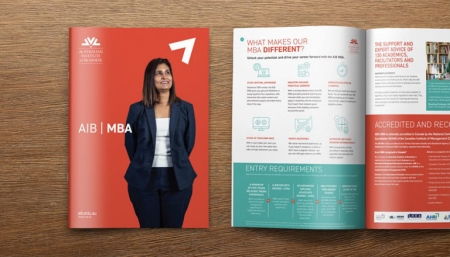Changes to FEE-HELP: What you need to know

In 2018, the Australian government passed the Higher Education Support Legislation Amendment (Student Loan Sustainability) Act 2018. The Act amends how higher education funding in Australia is governed, and could affect past, current and future students. Many of the changes come into effect on 1 July 2019, with further updates implemented throughout 2020.
Students who study with the Australian Institute of Business (AIB) and are eligible for Australian government study loans can use FEE-HELP to assist with the payment of all or part of their course fees. The upcoming changes will certainly be relevant to all current and past AIB students, students of other institutions and universities, plus those who are considering undertaking some study in the future.
If this sounds like you, here’s what you need to know about the FEE-HELP changes being rolled out in 2019 and 2020.
1. Repayment thresholds are changing
From 1 July 2019, the amount you can earn before you start repaying your FEE-HELP debt will decrease. In 2018, you could earn up to $51,957 before the threshold was triggered. In the new financial year, the minimum repayment threshold will lower to $45,881.
Earners in this bracket will not be slogged with large repayments, though. The repayment percentage for earners in this bracket is also changing.
In 2018, repayments kicked in at a minimum of 2% and jumped straight to 4% from there. From 2019 onwards, you can start repaying at a rate of just 1%. The FEE-HELP threshold climbs by single percentage points with a top threshold of 10% for those earning over $134,573.
So, if you’re earning $46,000, that works out to less than $9 per week.
2. The total amount you can borrow is increasing
The government is also raising the overall threshold for what you can borrow. From 1 January 2019, the FEE-HELP loan limit will increase from $102,293 to $104,440. If you’re studying medicine, dentistry or veterinary science, the limit increases even more dramatically, going from $127,992 to $150,000.
3. Loan balances will become renewable
In conjunction with the above, the government is also introducing a renewable balance system. Repayments made on the debt during the 2019-20 financial year or afterwards will ‘top up’ your HELP loan balance and allow you to borrow more money up to the current limit. This applies to both compulsory and voluntary repayments, and comes into effect on 1 January 2020.
The ATO will communicate with the Department of Education to advise of any repayments so that the Department can adjust the remaining limit accordingly.
What this means is that if you’re working as well as studying, and paying off your study loan, you can re-borrow in the future to pursue further or ongoing study.
4. The cost of living in Australia will be taken into consideration
Historically, FEE-HELP repayment thresholds have been indexed using the Average Weekly Earnings (AWE). From 1 July 2019, this will change to the Consumer Price Index (CPI) to ensure that repayment requirements are adjusted in line with the cost of living. While interest is not charged on HELP debts, an indexation amount is applied at the end of each financial year in line with the CPI.
5. The thresholds for FEE-HELP and HECS-HELP are combining
Currently, FEE-HELP loans are subject to a cap on the amount they can borrow. HECS-HELP loans currently have no threshold, but that’s changing. In 2020, the threshold will be combining to include FEE-HELP, VET student loans, VET FEE-HELP and HECS-HELP. It will be known simply as a HELP loan.
However, that doesn’t mean that your old HECS-HELP loan will stop you borrowing for your postgraduate degree. Only HECS-HELP loans incurred after 1 January 2020 will count towards the new threshold limit. Existing HECS-HELP loans will not count, although existing FEE-HELP loans will.
Visit the Department of Education and Training website for further changes that may be relevant to you.
What’s the difference between FEE-HELP and HECS-HELP?
These two similarly named loan schemes do differ. Here’s how.
FEE-HELP is a loan for eligible domestic fee-paying students. Providers which offer FEE-HELP are often not subsidised by the Government, and so tuition fees are set by the approved providers. FEE-HELP is available at both public universities and private accredited providers who are FEE-HELP approved.
Undergraduate and postgraduate students who study with private accredited providers, as well as postgraduate students who study with public universities, are most likely to utilise FEE-HELP.
HECS-HELP is a loan for eligible Commonwealth supported students studying at public universities (and some approved private higher education providers). Commonwealth supported students study in Commonwealth supported places which are subsidised by the Government.
Undergraduate students who study at public universities are most likely to utilise HECS-HELP.
Visit the the Study Assist website for information on all the students loans available to Australians and the latest updates.
Eligibility for FEE-HELP when studying with AIB
Despite all the changes we’ve discussed that are coming in to effect, the eligibility criteria for FEE-HELP is not changing.
AIB is an approved FEE-HELP provider, meaning that our students can pay their tuition fees off over time at a rate relevant to their income. This helps make education accessible to more people and relieves the cost pressure so that students can truly focus on their studies.
AIB students are able to access FEE-HELP if they are Australian citizens or holders of a permanent humanitarian visa. FEE-HELP is also available to other permanent visa holders in special circumstances. And, eligible New Zealand citizens who meet certain residency criteria may also defer their fees to FEE-HELP.
Enquire to chat with a Course Advisor to discuss your personal circumstances.
Read more: Is An MBA Still Worth The Investment?





